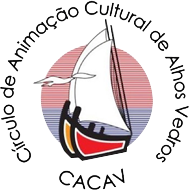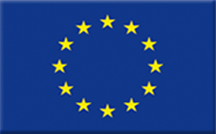CACAV – Círculo de Animação Cultural de Alhos Vedros
Name of the N-arts activity: Creative Writing Course
To encourage reading and writing, to develop social and playful practices of reading and writing as well as autonomous writing skills, to stimulate self-confidence in the practice of writing, to discover individual creative abilities.
General Data
Characteristics
From 24 March to 2 June, 2019
Frequency / Periodicity: 1 session of 2 hours per week, for a total of 20 hours.
Art form: Creative Reading and Writing.
Kind of activity: Informal setting.
Participants
Number of participants: 15
Age: from 22 to 68 years.
Gender: 6 men and 9 women.
Social background: diversified group at socio-economic and cultural level.
Framework
Description of the activity
This course was attended by 15 people, the youngest being 22 years old and the oldest 68 years old.
The trainees had different educational qualifications and levels, ranging from elementary school to secondary school.
Regarding their professional situation, the group was very diversified, including unemployed, retired, students, health workers, civil servants, and industry workers among other professional fields.
We had divulgated the course and through the pre-registrations by the community, we could assure the course for everybody who signed up and wanted to participate in the activities.
The products of the creative writing course were organized to be shared with the community, being available to all target groups.
This experience was very positive. An interesting result is that a new writing course will be realized for another group of people who are interested in this kind of activity. Likewise, the trainees of the 1st edition are interested in the continuation of writing activities.
Intention, goals, aims
• to encourage reading and writing;
• to provide individual and collective written creations;
• to develop social and playful practices of reading and writing;
• to stimulate self-confidence in the practice of writing;
• to encourage strategies to overcome emotional blockages in writing and reading;
• to utilize some creative writing techniques;
• to discover individual creative abilities;
• to develop autonomous writing skills.
Planning/preparation
We had published the course in a leaflet. It was sent to diversified target groups by mail and it was made public on the CACAV association's website.
This course was organized by three internal trainers of the CACAV association. The aims to be achieved were established according to:
the characteristics and objectives of the N-arts Project (for example we have accepted people independently of their abilities, experience, age, gender, race, i. e., that’s why the group was very diversified);
the aims of our cultural association CACAV: we work with different adult target groups with a life-long learning perspective and in non-formal adult education in which everybody respects everybody in order to guarantee participation in society.
The trainers had selected the most suitable content to the target group and the schedule was outlined with the people.
Teaching/Training Method
The methodology used in this course was defined considering the aims to be achieved and the target group.
A pleasant learning environment was created in order to help trainees in discovering their writing abilities, creativity and imagination. Small tasks were requested, beginning with easier exercises, then leading onto more difficult productions. Trainers always presented the tasks as pleasant and playful challenges. This methodology allowed trainees to develop self-esteem and self-confidence in order to be able to express their ways of being, thinking and feeling without fear or limitations.
Some exercises were proposed to be done individually, in groups and also collectively. These exercises were about, for example:
listening to tales and writing original stories based on it;
utilizing characterization in texts;
writing original poems;
utilizing a variety of poetic forms.
In this way, it was possible to work with each other, developing writing skills and at the same time interpersonal relationships.
Some training sessions were in collaboration with the Drawing and Painting Atelier, in order to allow the development of imagination and creativity. For example, trainees were asked:
firstly, to contemplate imagery (realized by the trainees of this Atelier) and listen to music (the same music that had also inspired the drawing and painting trainees who created the imagery at the same time);
after it, to imagine story scenes or poems;
finally, to write.
There was also some autonomous work to allow trainees to write a production not limited by time and space, allowing the free use of imagination and creativity.
In the last session the texts carried out in autonomous work were presented, in informal context of cooperation and friendship.
Outcomes
The aims of this course were fully accomplished.
The results of this course were very positive.
The trainees’ productions were of excellent quality and showed that they strongly motivated and committed themselves to carrying out the various tasks.
Consequently, the writing skills were really developed, at the same time, participants finished the course more motivated to aspects of social inclusion, cooperation with others and mainly to the discovery of themselves (they became more aware of their abilities, more able to show themselves to others living in society and gained more self-confidence in relationships).





